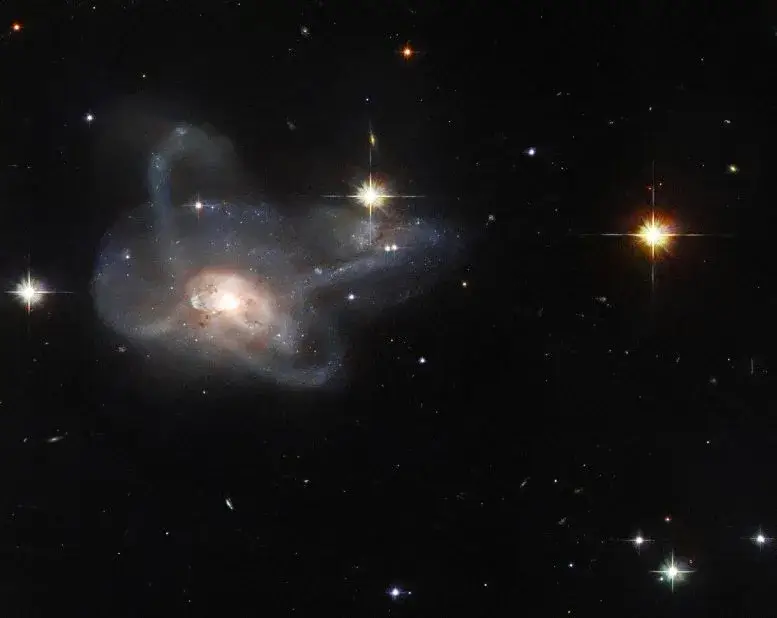Citizen scientists have classified lexicons to help scientists solve an astronomical-scale problem—how to sort through the vast amounts of information generated by robotic telescopes

The galaxy CGCG 396-2, an unusual multi-armed galaxy merger located about 520 million light-years from Earth in the Orion group, is captured in this stunning image from the Hubble Space Telescope Observatory.
This observation is a gem from a citizen science project called the Galaxy Zoo Project, where hundreds of thousands of volunteers have classified galaxies to help scientists solve an astronomical-scale problem—how to sort through the vast amounts of information generated by robotic telescopes. After a public vote, a selection of the most astronomically intriguing objects in the galactic zoo were selected for further Hubble observations. CGCG 396-2 is one of the selected objects, and it was captured in this image by Hubble's Advanced Camera for Surveys.
The Galaxy Zoo project began when we gave astronomers the impossibly huge task of classifying more than 900,000 galaxies by their appearance. By setting up a web interface and inviting scientists from many institutions to contribute to the challenge, the Galaxy Zoo team was able to crowdsource the data analysis. It was a huge success: within six months an army of 100,000 volunteer astronomers contributed more than 40 million galaxy classifications.
Since its initial success, the Galaxy Zoo project and subsequent projects have contributed to over a hundred peer-reviewed scientific papers and led to a rich array of intriguing astronomical discoveries above and beyond their initial goals. The project's success has also inspired more than a hundred citizen science projects on the Zoniverse portal, from analyzing data from the European Rosetta spacecraft's visit to comet 67P/Churyumov-Grasimenko to counting killer whales around remote islands in Alaska.
More of the topic in Hayadan:
- On the occasion of the launch of the Webb Space Telescope: the five most exciting telescope images of the universe
- Hubble discovered a zoo of galaxies through 40 hours of observation at one point
- Artificial intelligence has identified 80,000 spiral galaxies
- The Drake formula (calculating the probability of discovering intelligent aliens): the missing parameter and the fate of humanity
